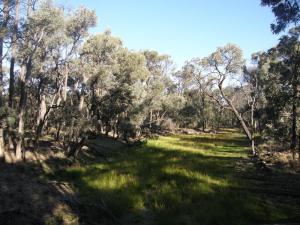 A group of 25 leading Queensland scientists have released a public statement of concern about proposed changes that could sharply increase vegetation clearing in the state.
A group of 25 leading Queensland scientists have released a public statement of concern about proposed changes that could sharply increase vegetation clearing in the state.
“Queensland is the most biodiverse state in Australia,” said Dr Martine Maron of The University of Queensland, a spokesperson for the group. “Sadly, it has also seen 30 extinctions, with hundreds more on the threatened list. Ongoing habitat clearing is a major threat to our endangered wildlife.”
According to the scientists, land clearing is the greatest current threat to much of Australia’s biodiversity. Yet proposed changes to the Vegetation Management Act by the Queensland Government are likely to accelerate clearing.
“About 80,000 hectares of Queensland’s native vegetation are still cleared each year, a third of which is mature remnant bushland,” said Dr. Maron. “Queensland already clears far more native bushland annually than any other state in Australia”.
The scientists are concerned that a series of changes proposed in the Vegetation Management Framework Amendment Bill will increase, not decrease, land clearing.
The proposed changes include allowing a new category of broadscale clearing for some types of agriculture, and removing the protections for mature regrowth of threatened plant communities. A report released last week by the World Wildlife Fund has found that around 2 million hectares of native vegetation face increased risk of clearing due to these changes.
“It has been estimated that for every 100 hectares of native woodlands cleared, roughly 2000 birds, 15,000 reptiles and 500 native mammals will die,” said Professor Hugh Possingham of The University of Queensland. “Such losses increase the chance that species will become locally or even globally extinct.”
Threatened vegetation types such as Brigalow — already heavily cleared — will never recover enough to be removed from the threatened list if regrowth is not allowed to mature, say the scientists. Old regrowth, which would lose protection under the proposed legislation, is also important habitat for many fauna species.
The scientists say protection of high-value regrowth is the most cost-effective way to restore habitat. Tens of millions of dollars are spent annually trying to recover and restore lost ecosystems in Australia. “Restoration can cost more than $20,000 per hectare, so avoiding the loss in the first place is far more cost-effective”, said Professor Carla Catterall of Griffith University.
“And biodiversity isn’t the only casualty of land clearing,” said Professor Catterall. “Land clearing also reduces water quality for rivers, increases dryland salinity, and is a major cause of greenhouse gas emissions.”
“The proposed changes are neither balanced nor sustainable”, said Professor Catterall. “In our statement, we urge the Premier to reconsider these changes.”
CONTACT:
Dr Martine Maron The University of Queensland mob: 0417 110 537 m.maron@uq.edu.au
Professor Carla Catterall Griffith University ph: 07 3735 7499 c.catterall@griffith.edu.au
Professor Hugh Possingham The University of Queensland mob: +61 434 079 061 h.possingham@uq.edu.au
Professor Roger Kitching Griffith University mob: 0413 112 621 r.kitching@griffith.edu.au

Congratulations to the science community for speaking out on this retrograde Government decision. I despair that the measures I initiated to protect biodiversity and productivity of the landscape in 1999-2001 are now tragically being reversed.